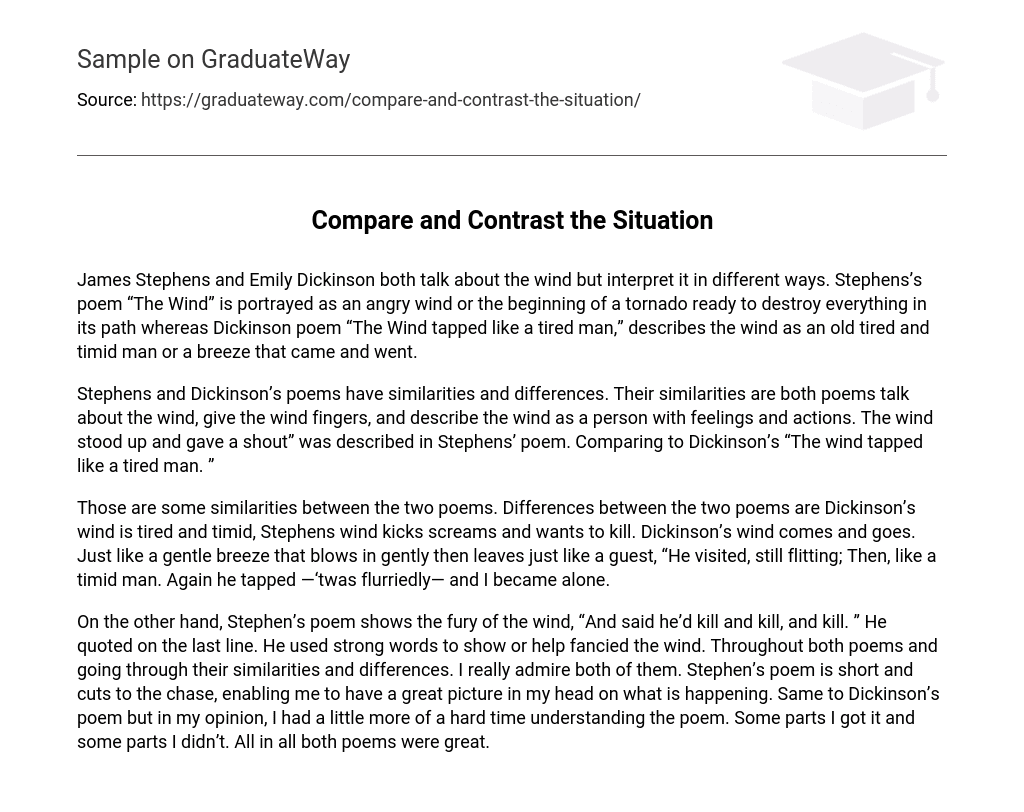Both James Stephens and Emily Dickinson discuss the wind in their poems, but they have contrasting interpretations. In Stephens’s poem “The Wind,” the wind is depicted as a furious force or the precursor to a tornado that is poised to obliterate everything in its wake. On the other hand, Dickinson’s poem “The Wind tapped like a tired man” portrays the wind as an elderly and weary man or a gentle breeze that makes fleeting appearances.
Stephens and Dickinson both explore the theme of the wind in their poems, although they approach it in slightly different ways. Both poets give the wind anthropomorphic qualities, portraying it as having fingers and as a being with emotions and actions. Stephens’ poem depicts the wind standing up and giving a shout, while Dickinson’s poem describes the wind tapping like a tired man.
There are similarities between the two poems, as well as differences. In Dickinson’s poem, the wind is described as tired and timid. On the other hand, in Stephens’ poem, the wind is described as aggressive, screaming and desiring to kill. Additionally, Dickinson’s wind comes and goes, resembling a gentle breeze that enters softly and then departs like a guest. She wrote, “He visited, still flitting; Then, like a timid man. Again he tapped — ’twas flurriedly — and I became alone.”
While Stephen’s poem depicts the wind’s fury with the words, “And said he’d kill and kill, and kill,” his use of strong language helps to portray the intensity of the wind. When comparing both poems, I appreciate them both equally. Stephen’s poem is concise and straightforward, allowing me to easily envision the events taking place. Similarly, Dickinson’s poem also evokes imagery, but I personally found it slightly more challenging to comprehend. There were certain parts that I understood, while others were harder to grasp. Nevertheless, both poems were excellent in their own ways.





